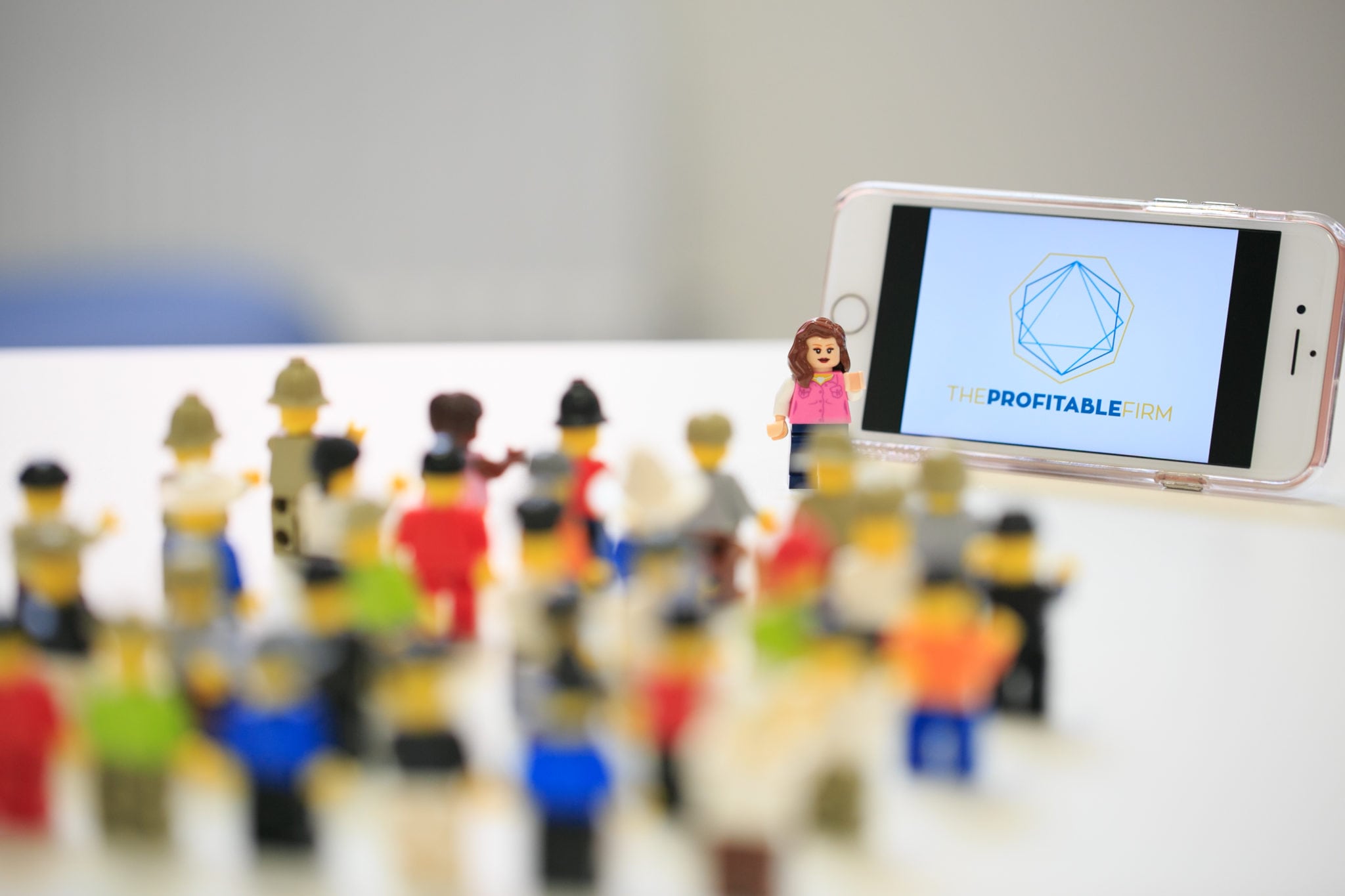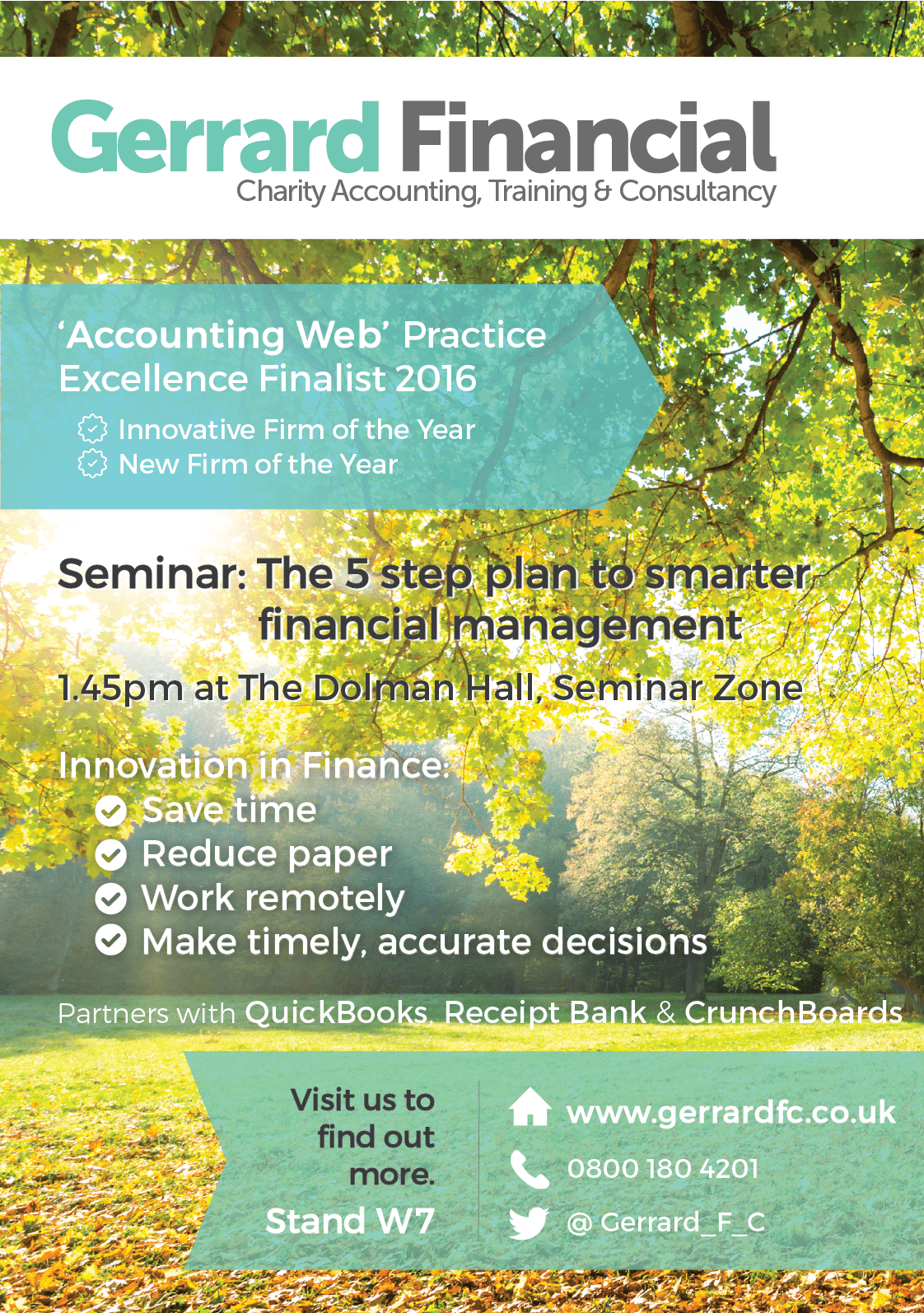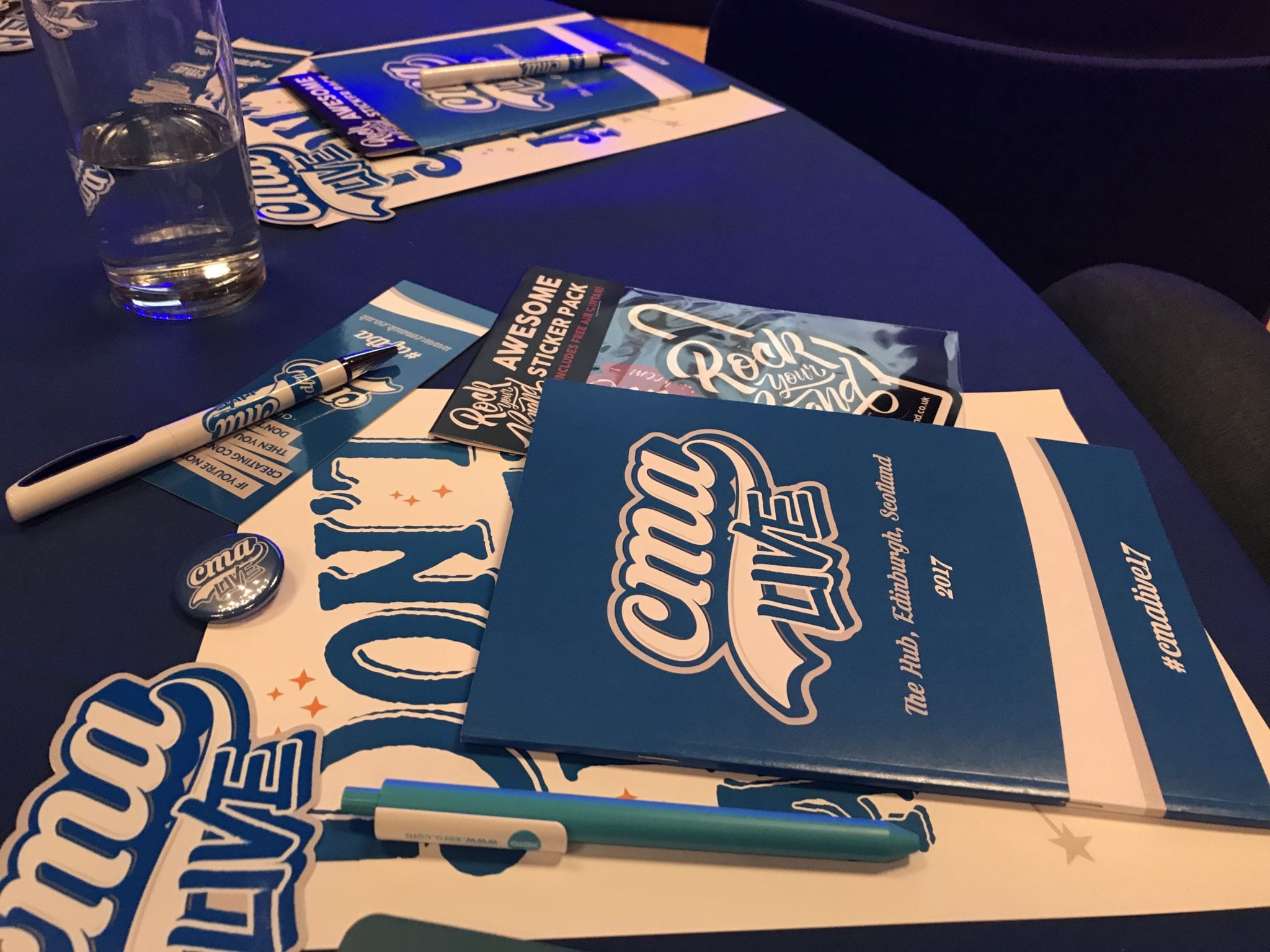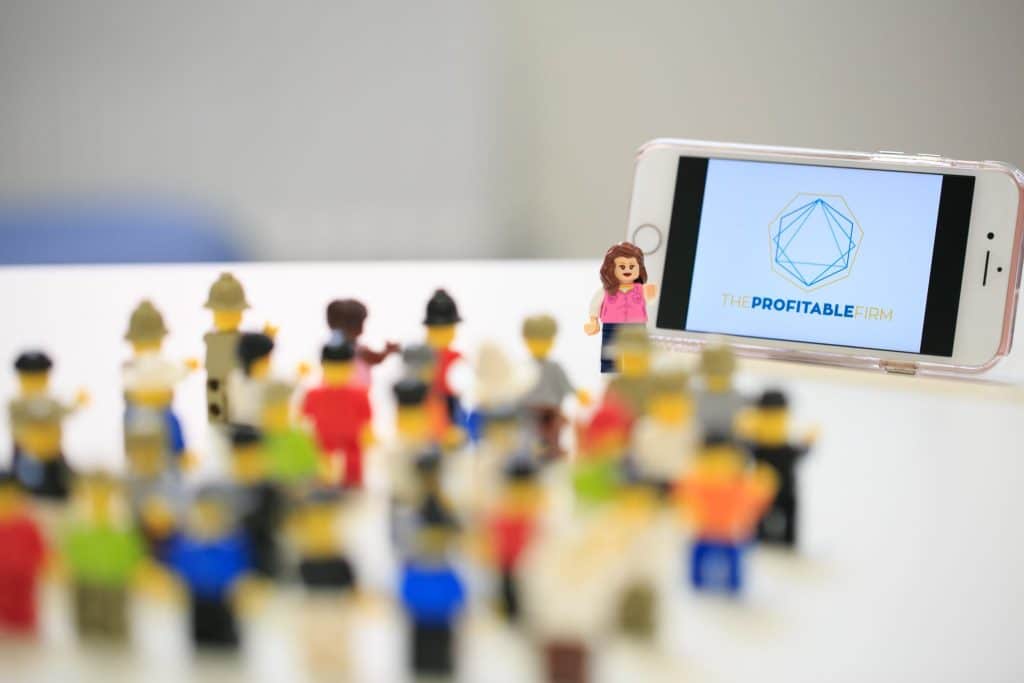 You will get far more from being part of a conference or exhibition when you prepare in advance.
You will get far more from being part of a conference or exhibition when you prepare in advance.
Because event marketing is so new to many accountants, we’ve seen many accountants who are part of a conference or exhibition, and are disappointed with the results.
When your accountancy firm is presenting or exhibiting, there is so much more to it than simply showing up at the event with a few team members and talking to people. That is… if you actually want it to be effective. And get leads. And ultimately get more business.
Here are my tips for making the most of that event so that you get more leads.
(For the purposes of this blog we’ll simply use the word ‘event’ – but it could be a conference, a seminar, a workshop, an exhibition, whatever. You get the idea.)
Decide on one clear call to action
It’s critical for you to be clear about what you want people to do – at the event, after the event, on your website landing page, from social, etc.
The key is to choose a call to action that is simple. Easy. Not requiring a massive commitment as yet.
I’m presuming that most of the people who are connecting with you at this event have never heard of you before. You’re new to them, and therefore trust takes time to build.
Rather than pushing them to a “free consultation”, what can you offer which is genuinely helpful to them? How do you prove your expertise, your willingness to help, with no pressure?
You may want to revisit the Progression Model, and remember to create a call to action that falls within the ‘Free things’ category – for those who aren’t ready to buy yet.
Oh – and your call to action can change at different points in your marketing prep. Your call to action before the event could be “let us know on twitter if you’re coming!” and on the day it could be “visit us at stand X!” – and after the event is over, “download our free guide” or whatever your helpful item is.
Create a landing page on your own website
Your website is your marketing hub: and this landing page you create will be your event hub.
It’s where you direct people before the event so you can get them excited; during the event so they can take action straight away; and after the event for those who forgot, or got busy, or weren’t even there.
This landing page needs to be created well before the event so you can use it everywhere. A few things to consider for your landing page are:
- Explain what you’re doing at the event, and where you’ll be. Are you presenting? Exhibiting? Wandering about?
- Include the logo and the hashtag of the event
- If you have imagery or photographs from a previous similar event, include those
- Record a video explaining what you’re excited about regarding this event, and why you’re there
- Include your one clear call to action. As mentioned above, you may need to edit and change the website page at different points in your marketing (before, during, and after the event).
Create a helpful item or free download
It’s always good to have a specific helpful item that relates directly to the event. Are you exhibiting at a not-for-profit exhibition? Create a guide that will help charitable organisations use cloud accounting better. Presenting on financial growth at a seminar? Perhaps a free profit report using their numbers, or a review session to discuss their own issues with financial growth.
Whatever your item is, you can link to it on your website page, add it to your leaflet or handout, share it on social, and make use of it everywhere!
Design a leaflet or handout for the event
When you’re standing at the exhibition with hundreds or thousands of people walking past, or presenting before a small or large crowd, it helps to give them something they can physically take away with them.
People are used to getting free things at events – not only leaflets or handouts, but sweets or pens or mugs or something to put in the event bag and take home.
Having a leaflet to hand out to people who walk past is an excellent way to start conversations – and if they’re not ready or not interested yet, they may file it away and look at it later.
Keep this leaflet extremely simple. A few words, an image, your logo, and a short URL. That’s it.
Remember:
- Do not include every single form of contact information possible. People know how to use the world wide web. Send them to your landing page and they’ll find the rest.
- Do not be tempted to explain everything – your offer, what’s included, your services, etc. That’s the point of the website page. You want to push them to go look it up and read more.
- Use a professional graphic designer. This is your face to the world, and for many people it will be the first impression they have of your firm. It needs to be good.

Write blog posts before and after the event
This is an opportunity for you to begin to combine multiple content elements together.
First, you’ll want to write at least one blog post in advance of the event – perhaps on the three big problems that your attendees will face in relation to the event topic, your presentation, etc. (Write more blog posts if you can – the more the better.)
But here’s where all your other content begins to come together: you can embed your intro video into your blog post. Link the post to your landing page. Share the blog post on social, so that those who read the blog will then go to the event landing page and then back to social, full circle.
After the event, write about how it went: what you learned, who you met, the issues people mentioned to you, and what they can do about it. Include photos that you took on your phone when you were at the event. Mention other speakers and exhibitors, if it’s relevant. And direct the reader back to your event landing page, and your one clear call to action.
Engage on social media before, during, and after the event
Social is going to be your best friend to help you maximise the power of this event. Here are a few things you can do:
- Find out what the hashtag is. Use it in every post relating to the event. It will help people find you.
- Follow people who have said they are going.
- Drop a note to people who are attending the event and start a real conversation. “Hey, glad you’re going! Looks like you’re coming a long way – you’ll need some serious coffee that morning!”
- Ask who’s going, and invite them to ask questions in advance (particularly if you’re exhibiting or presenting)
- Retweet and share other posts relating to the event, or the event topic. Again, use the event hashtag wherever possible.
- Get your team involved on social: the more people with their own accounts who are sharing, posting, and engaging, the more you’ll get from it.
- Train your team on social: Make sure everyone knows what to post (and not), and how to connect with people you meet there
- Use social to make connections at the event. Pull out your phone and follow them on Twitter or Instagram when you meet them, so you don’t forget.
- Use social media platforms that match the event audience. If everyone is using Twitter, you use that. If they’re all on Instagram or Facebook, use that.
By the way, if you’re part of an event soon and would like a 30 minute call with our Social Media Director to get some tips and ideas, you can book that here.
Take photographs at the event
You don’t have to be a professional photographer (although if you want to bring one along, that’s even better).
The best camera is the one that’s always with you: so use your iphone or whatever phone and capture the team talking to visitors, panoramics of the whole event, other speakers, your own stand or presentation, etc.
Make a real effort to capture the feel of the event, and get good lighting. You may want to ask a photographer for a few tips so your photos aren’t dark, blurry, or making the event look bad rather than good!


Send emails before and after the event
Email is still very much alive. Send an email to your entire database (or to a particular relevant segment, if it’s only relevant to some) explaining that you are going, why you’re going, and that you would love to see them there. Remember to send them to your website landing page!
If you have a list of conference registrants, send an email to them and share your exhibition stand number, or a map, or something else so it’s easy for them to find you.
You could also consider doing a series of videos, or Facebook Live sessions, or a webinar in advance of the event to stir up interest. Naturally you’ll want to email people about these so they can join!
After the event, send follow up emails:
- Segment the emails to certain categories of people – those who stopped by your stand, those who gave you a card, those who specifically expressed an interest in a certain service.
- Direct them to your website page and your one clear call to action
- Send a series of emails, rather than only one. For example, you could send an email the day after the event, then a week after, then two or three weeks after, and even a few months after. Time goes by so quickly.
- If it’s a close community, you could offer a get together at your offices or some sort of connection that brings people together again a few months after the event.
- Send personal emails to those you remember meeting. (I’d suggest taking notes on your phone so you’ll be able to send intelligent emails!) Offer to arrange a call or a meeting, and as always direct them back to your landing page.
Let us know how the event goes!

